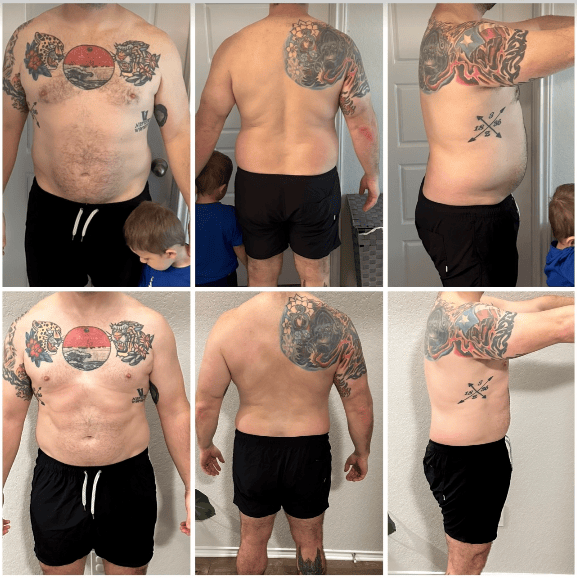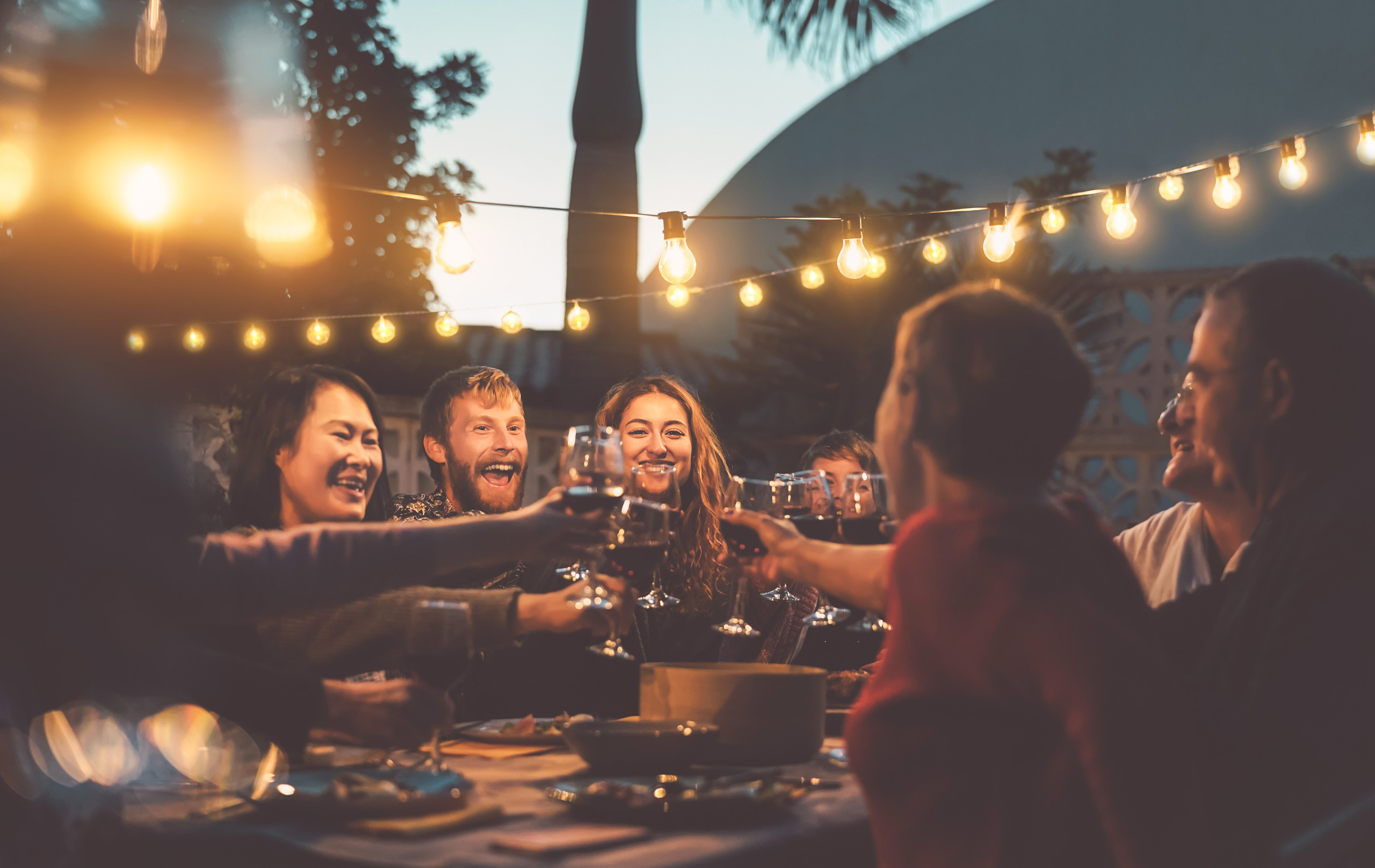It looks like we generally eat 30 to 80% more in social situations [1], but it is pretty hard to have a good party by yourself so let’s discuss what we can do to potentially make social occasions less about food and more about fun.
I am never going to be the “health” guy slapping Doritos out of people’s hands.
That is just annoying nutritional elitism.
So, if we are in an active fat loss phase and have the honor of being invited to a party let’s chill out and control what we can control.
In a social eating situation, the first things I think about getting a handle on are Variety and Portion Control.
A variety of hand-held hyper-palatable food items is consistently one of the best ways to overeat without knowing [2-6] and a lack of portion control tends to get most of us in trouble [7-14].
If you are in an active fat loss phase and have little to no control over the food environment at a party, I would suggest filling half your plate with vegetables and whole food and then fill the other half with higher protein entrée like a burger or some barbeque chicken...and that’s it.
Then make the social occasion about the people and the fun, not the food.
This is obviously easier said than done and where most of us are going to get in trouble is snacking and/or deserting on carb and fat combined food items like chips and ice cream that are hard to put down and don’t keep us full.
Furthermore, in this party invite scenario, I would also aim to eat a lower-calorie higher-protein meal for the other two eating occasions of the day while still making sure to hit your movement goals as this may help regulate your appetite.
Overall, this social day will still probably be a net zero from the fat loss side, but at least it didn’t crush your entire week’s progress.
AKA fat loss damage control while still being able to enjoy hanging out with your FRANDZ!
Also, don’t worry one monumental screw-up at a July 4th party isn’t going to magically give you a fatty liver and diabetes [15], but decades of socially overeating high varieties of energy-dense hyper-palatable food sure could.
This is why finding individualized strategies and coping plans that work for you in these situations can be so helpful for both weight loss and weight loss maintenance.
Now, if you are hosting the party the script flips a bit.
In these scenarios, I look to always serve one main delicious meal with a lower level of variety.
We generally make a giant salad with dressing on the side and we always serve some kind of grilled or lightly sautéed vegetable dish, then we have the main protein which is usually leaner and carbohydrate with no added fat.
Simple and delicious like the vast majority of our My Fit Food meals!
This type of set-up is filling and allows everyone to enjoy each other’s company while lowering the likelihood that people will significantly subconsciously overeat if that is something they are trying to work on.
Social occasions in obesogenic food environments are certainly tough and offer up some unique challenges, but with some strategizing and experience you can be successful and if you fail – how can you learn from that experience and get back to your plan as quickly as possible?
And, the really cool thing is that all of these skills and potential learning experiences will continue to serve you as you transition out of an active fat loss phase and into maintenance.
So here’s to an amazing weekend with family and friends. It’s been a wild last year and a half and we are always wishing you and yours the best because if you are reading this we know that you
#GIVEAFIT

REFERENCES:
1. Ruddock, H.K., et al., A systematic review and meta-analysis of the social facilitation of eating. Am J Clin Nutr, 2019. 110(4): p. 842-861.
2. Embling, R., et al., Effect of food variety on intake of a meal: a systematic review and meta-analysis. Am J Clin Nutr, 2021. 113(3): p. 716-741.
3. Brondel, L., et al., Variety enhances food intake in humans: role of sensory-specific satiety. Physiol Behav, 2009. 97(1): p. 44-51.
4. Raynor, H.A., Can limiting dietary variety assist with reducing energy intake and weight loss? Physiol Behav, 2012. 106(3): p. 356-61.
5. Raynor, H.A., et al., Limiting variety in non-nutrient-dense, energy-dense foods during a lifestyle intervention: a randomized controlled trial. Am J Clin Nutr, 2012. 95(6): p. 1305-14.
6. Raynor, H.A. and M. Vadiveloo, Understanding the Relationship Between Food Variety, Food Intake, and Energy Balance. Curr Obes Rep, 2018. 7(1): p. 68-75.
7. Ello-Martin, J.A., J.H. Ledikwe, and B.J. Rolls, The influence of food portion size and energy density on energy intake: implications for weight management. Am J Clin Nutr, 2005. 82(1 Suppl): p. 236S-241S.
8. Kling, S.M., et al., Double trouble: Portion size and energy density combine to increase preschool children's lunch intake. Physiol Behav, 2016. 162: p. 18-26.
9. Kral, T.V. and B.J. Rolls, Energy density and portion size: their independent and combined effects on energy intake. Physiol Behav, 2004. 82(1): p. 131-8.
10. McConahy, K.L., et al., Food portions are positively related to energy intake and body weight in early childhood. J Pediatr, 2002. 140(3): p. 340-7.
11. Raghoebar, S., et al., Served Portion Sizes Affect Later Food Intake Through Social Consumption Norms. Nutrients, 2019. 11(12).
12. Roe, L.S., S.M.R. Kling, and B.J. Rolls, What is eaten when all of the foods at a meal are served in large portions? Appetite, 2016. 99: p. 1-9.
13. Rolls, B.J., What is the role of portion control in weight management? Int J Obes (Lond), 2014. 38 Suppl 1: p. S1-8.
14. Wansink, B. and K. van Ittersum, Portion size me: plate-size induced consumption norms and win-win solutions for reducing food intake and waste. J Exp Psychol Appl, 2013. 19(4): p. 320-32.
15. Syed-Abdul, M.M., et al., The Tailgate Study: Differing metabolic effects of a bout of excessive eating and drinking. Alcohol, 2021. 90: p. 45-55.
16. Roe, L.S. and B.J. Rolls, Which strategies to manage problem foods were related to weight loss in a randomized clinical trial? Appetite, 2020. 151: p. 104687.
17. Grieger, J.A., et al., Discrete strategies to reduce intake of discretionary food choices: a scoping review. Int J Behav Nutr Phys Act, 2016. 13: p. 57.
About Author: Mario Mendias





